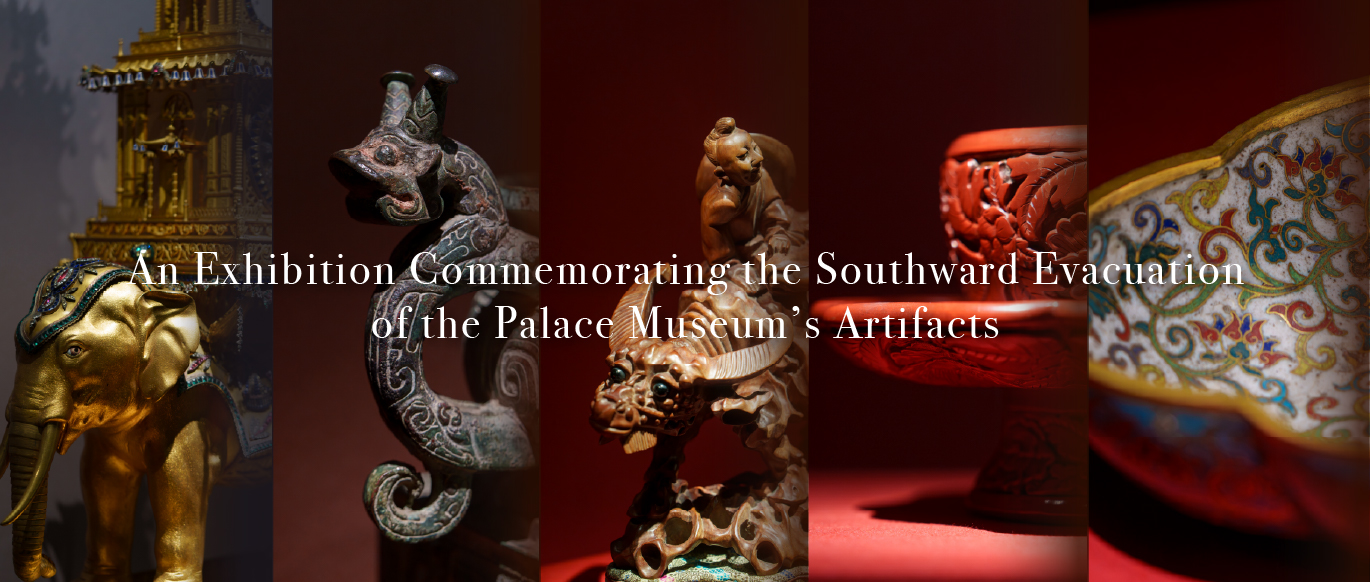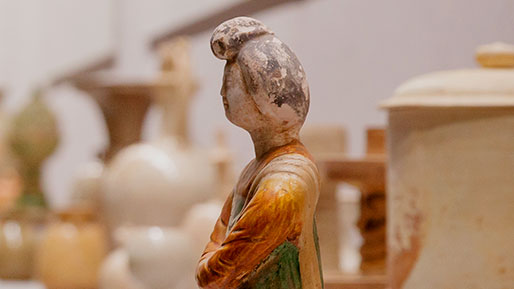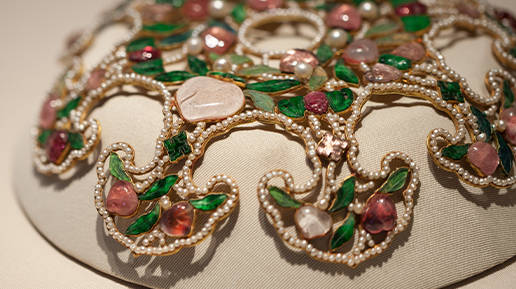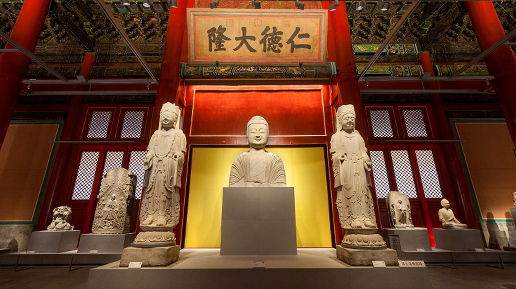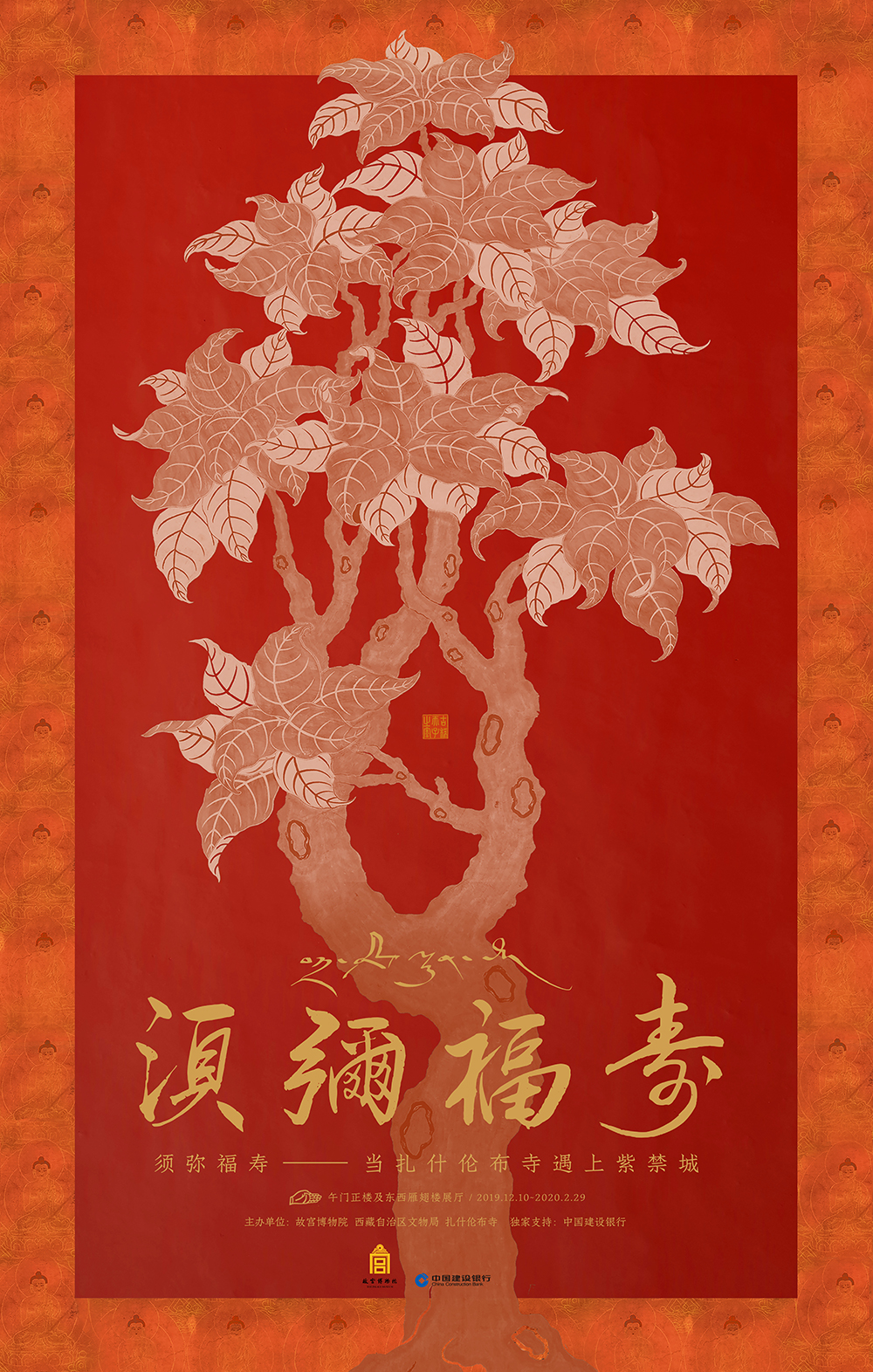
Tibetan Buddhism has a long history and diversity of sects, one of which is the dominant Gelug school (Tibetan dGe-Lugs-Pa, Chinese Gelu pai) founded by Tsongkhapa Lobzang Drakpa (1357–1419). Also known as the Yellow Sect (Chinese Huang jiao), this branch of Buddhism took on an important role in seventeenth century China. In 1645, the Khoshut Mongol leader Gushi Khan (1582–1654) bestowed the title Banchin Bogd (Chinese Banchan bokeduo) upon Losang Chökyi Gyaltsen (Tibetan Blo bzang chos kyi rgyal mtshan, 1567–1662). Although he was the first monastic known by the title Panchen, he would be recognized as the fourth Panchen Lama. One of Tsongkhapa’s disciples named Khedrup Gelek Pelzang (Tibetan mKhas grub rje dGe legs dpal bzang, 1385–1438) and two other figures who made significant contributions to the development of the Gelug sect were recognized posthumously as the three previous incarnations of the Panchen Lama. In 1713, the Kangxi Emperor (r. 1662–1722) appointed the fifth Panchen Lama Lobsang Yeshe (Tibetan Blo bzang ye shes, 1663–1737) as Panchen Erdeni and bestowed him with gold plates (Chinese jince) and a gold seal (Chinese jinyin) to symbolize the official confirmation and approval of the imperial court of the Qing dynasty (1644–1911).
One of the six great religious sites of the Gelug sect is the Tashi Lhunpo Monastery (Tibetan bkra shis lhun po) founded in 1447 by one of Tsongkhapa’s eminent disciples named Gedun Drupa (Tibetan dGe \'dun grub pa, 1391–1474), who was recognized posthumously as the first Dalai Lama. The name Tashi Lhunpo means literally “the auspicious Sumeru monastery” and originates in the concept of Mount Sumeru (or Mount Meru), which Buddhists consider to be the axis of the universe. Located on the southern side of Mount Nima in Shigatse, Tibet Autonomous Region with an elevation of 3,900 meters above sea level, the impressive monastic complex comprises a main hall surrounded by a diverse group of structures covering an impressive area of nearly 700,000 square meters and surrounded by over 2,600 meters of enclosed walls. The Panchen Lamas have served as the overseers of the Tashi Lhunpo Monastery since 1601 during the tenure of the fourth Panchen Lama when the monastery underwent a large-scale expansion. It was designated in 1961 by the State Council as a Major Historical and Cultural Site Protected at the National Level.
As the Gelug sect of Tibetan Buddhism developed over the seventeenth and eighteenth centuries, the political structure of China was experiencing a fundamental transformation. The Qing court was undergoing the difficult process of uniting the entire country while Tibet endured a period of unrest as various players vied for power. Nevertheless, the fourth, fifth, and sixth Panchen Lamas played an significant role as religious leaders in the midst of political turmoil as they provided support through their forbearance while ensuring the stability of Tibet, advancing the Qing dynasty’s administration of the region, and assisting the court in managing relations with leaders in the surrounding areas.
Throughout the Qing dynasty, the Panchen Lamas and the central government of the Qing dynasty maintained a tributary relationship with regular exchange of tribute and imperial favor. The relationship is evinced by the numerous items in the collections of the Palace Museum and the Tashi Lhunpo Monastery. This exhibition presents 224 of the most precious works from these two collections in a display of the Panchen Lamas’ contributions to the Qing court’s establishment of a unified, multiethnic country and the cultural and historical significance of the unique arts and heritage of the Tashi Lhunpo Monastery. The exhibition is divided into the following three sections.
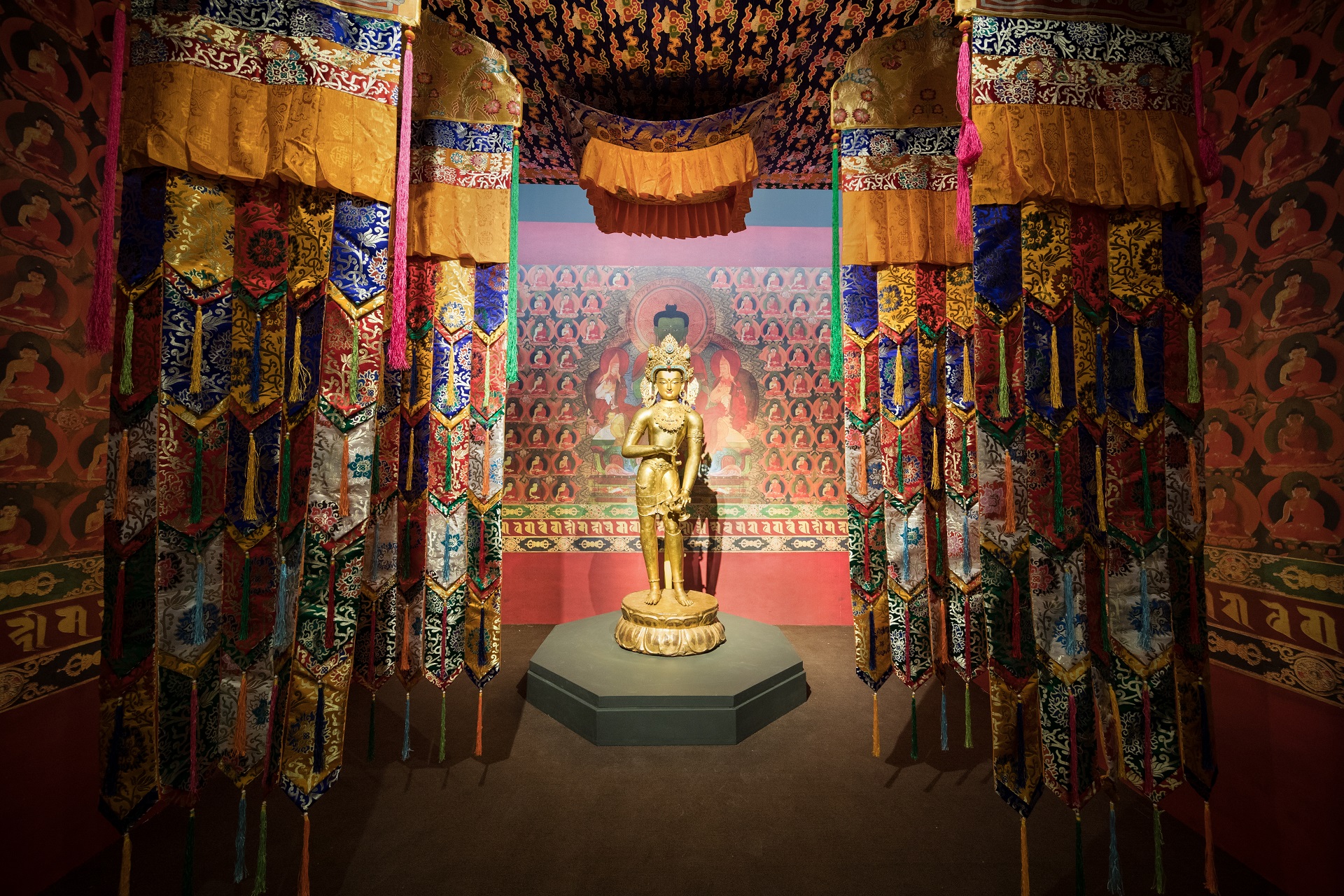
Section I: From Tashi Lhunpo Monastery to the Forbidden City
Since the first Dalai Lama Gedun Drupa founded the Tashi Lhunpo Monastery in 1447, the site became an important base for the propagation of the Gelug sect throughout the Gtsang area (i.e., Further Tibet; Chinese Houzang). The Panchen Lamas’ administration of the religious complex since the tenure of the fourth Panchen Lama is another testament to the location’s prestige in Tibetan Buddhism. Since 1713 when the Kangxi Emperor appointed the fifth Panchen Lama as Panchen Erdeni and presented him with the symbolic gold plates and gold seal, as well as posthumously listing the previous three Panchen Lamas with the same title, this practice of official appointment by the Qing court became part of the established system of handling relations with Tibetan Buddhism and associated regions. Due to the close relationship between the Panchen Lamas and the central government of the Qing court, the two parties had constant tributary exchange involving official plated-albums, seals, documents, and cultural artifacts, all of which testify to the historical contributions and religious status of the Panchen Lamas, who resided at the Tashi Lhunpo Monastery and maintained contact with the Forbidden City.

Section II: Treasures of the Sixth Panchen Lama’s Eastern Journey
In his efforts to manage relations with Tibetan Buddhism and its associated regions, the Kangxi Emperor invited the fifth Panchen Lama to an audience in the capital, but the journey was never accomplished due to a variety of reasons. During the forty-fifth year (1780) of the Qianlong reign (1736–1795), the emperor’s seventieth birthday was celebrated in opulence. After diligent preparation from all parties involved, the sixth Panchen Lama made the difficult journey from Tibet leading an entourage of 3,000 to present felicitations to the sovereign. The Buddhist leader died in Beijing and was interred at Western Yellow Temple (Chinese Xihuang si). This eastern journey served a significant function in maintaining the relationship between the central government and Tibet. Many of the cultural relics brought on the journey are now preserved in the Palace Museum while gifts from the court have been stored in the treasuries of the Tashi Lhunpo Monastery and have, until now, been known to few. This exhibition is the first showcase of the many gifts exchanged between the sixth Panchen Lama and the Qianlong Emperor during that historic visit.
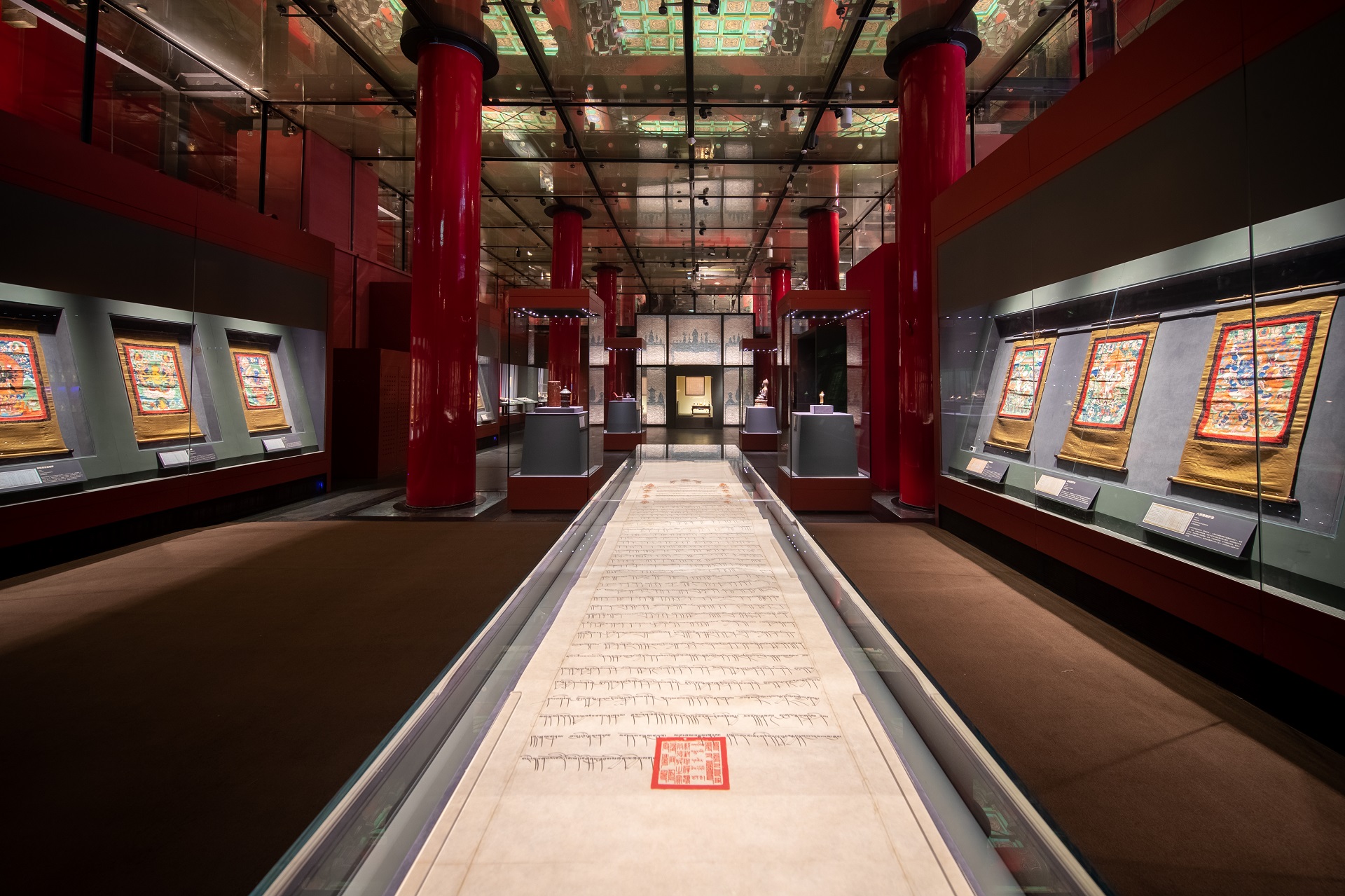
Section III: Art from the Tashi Lhunpo Monastery
The Tashi Lhunpo Monastery is one of the four great religious sites of the Gelug sect. Known for its authentic, rigorous Buddhist education, the complex is revered by Tibetan Buddhists of all sects and is the quintessential temple of the Gtsang area. Not only a center of Buddhology, the Monastery is also an important locus for art and culture as its treasuries contain a great number of ancient works from early Han-Chinese dynasties and from across the Himalayas. Additionally, the official workshops of Zhashijicai (Tibetan bKra shis skyes \'tshal) produce bronze images with the lima alloy and quantities of diverse works inspired by Nepalese and ancient-Indian styles. The artisans at these workshops have long been known for their exquisite craftsmanship and once had significant influence on the creation of Buddhist images in the imperial household’s workshops during the Qianlong period. The Monastery is also a major center for painting in the Gtsang area. The renowned fifteenth century artist known by the Chinese name Mianladunzhu served at the Monastery painting thangkas and murals, writing, and instructing pupils; his work led to the formation of what is known as the Mian school of thangka painting and the area’s important role in the development of the artform in subsequent centuries. The curators of this exhibition have selected some of the most precious thangkas and Buddhist statues to showcase the brilliance of Buddhist culture and artistic styles.
Translated and edited by Adam J. Ensign and Zhuang Ying





